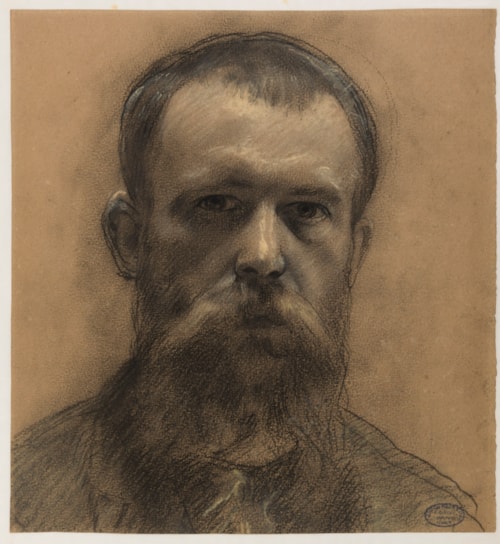
François-Joseph GUIGUET
Corbelin 1860 - Corbelin 1937
Biography
Born in the small village of Corbelin in the Dauphiné region of France, François-Joseph Guiguet received his initial training as an artist from the Lyonnais painter François-Auguste Ravier, who lived in nearby Morestel, before entering the École des Beaux-Arts de Lyon in 1879. He eventually completed his artistic education in Paris, in the studio of Alexandre Cabanel at the École des Beaux-Arts, where he befriended the older and more established painter Pierre Puvis de Chavannes. Guiguet made his debut at the Paris Salon in 1885, and in 1890 moved into a studio at the Bateau-Lavoir in Montmartre, where he was to live for some fourteen years. Apart from Puvis de Chavannes, Guiguet was friendly with such artists as Edgar Degas, Paul Gauguin, Maurice Denis and Henri-Joseph Harpignies, and in 1894 participated in the seventh Exposition des Peintres Impressionnistes et Symbolistes at the Parisian gallery Le Barc de Boutteville, alongside Gauguin and the Nabis artists. Guiguet enjoyed a successful career as a portrait painter, and was the subject of a number of admiring articles in the French art press, in 1898, 1904 and 1909. He also became well known for genre subjects of women and children, which he sent to exhibitions in Paris, Grenoble and Lyon, as well as in England, Germany and America. At the outbreak on the First World War Guiguet left Paris to settle in his native town of Corbelin in southeastern France, where he lived for the remainder of his life. Several years after the artist’s death, Guiguet’s nephew bequeathed a collection of paintings, watercolours and over 3,500 drawings by the artist to the municipality of Corbelin, where a museum devoted to Guiguet’s work was established in 1989, but was closed in 2011.
As one contemporary writer noted of the artist’s drawings, ‘When you look at a pencil drawing by François Guiguet, you immediately sense that you are looking at a French drawing... François Guiguet was always a great draughtsman. He never painted a picture without first making numerous studies. He never drew a portrait without having first tried many times in pencil to find the right attitude, mise en page and expression. In fact, he takes extreme pleasure in this. He loves drawing for its own sake. Any opportunity to have a pencil in his hand is good for him. He has covered thousands of pages with doodles, sketches and highly detailed works. Collectors took away the most decisive ones. So many charming and successful works were scattered to the four corners of France.’


